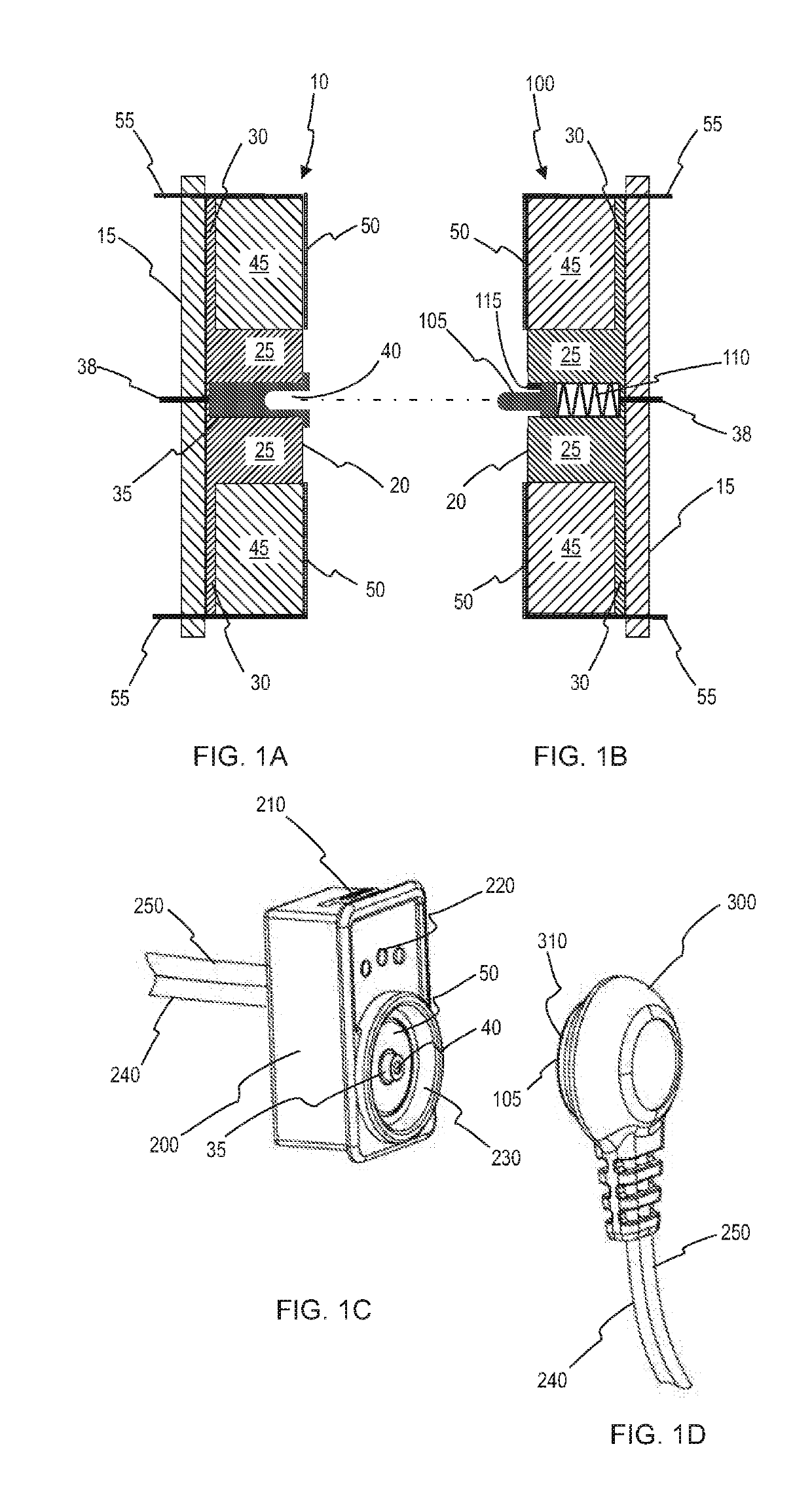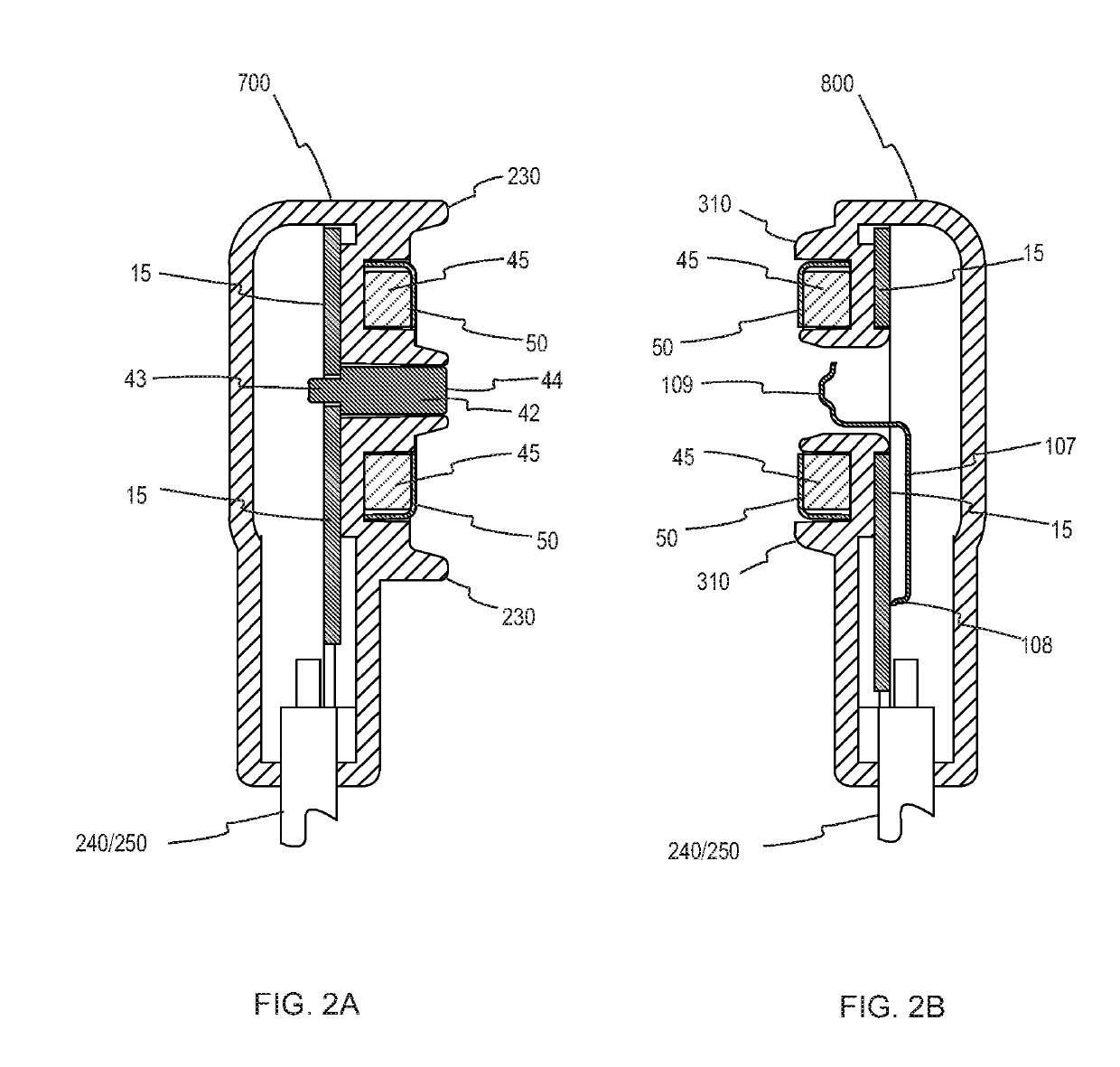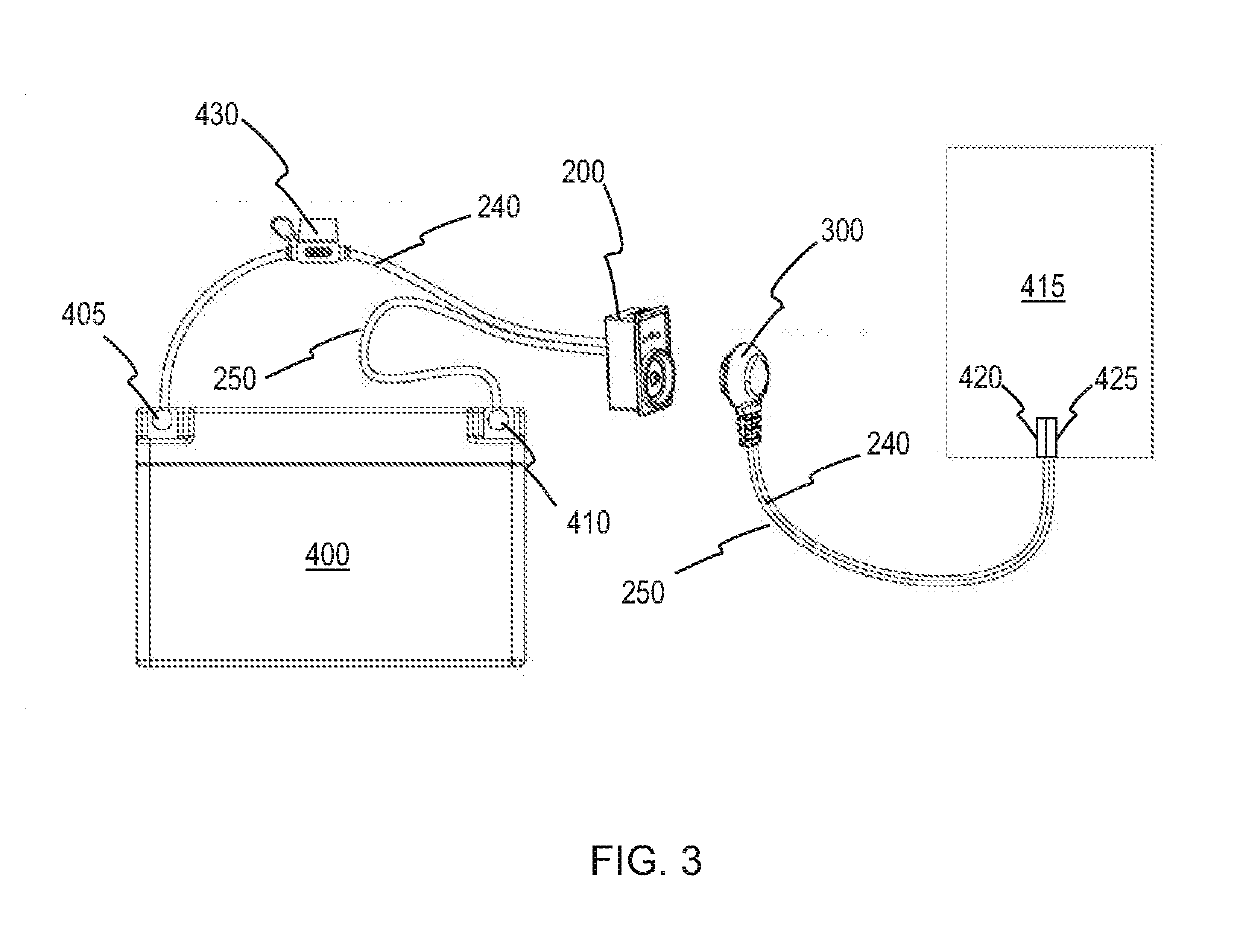Apparatus and Methods for Vehicle Battery Charging or Voltage Monitoring
a technology for vehicle batteries and charging devices, applied in the direction of coupling device connections, instruments, transportation and packaging, etc., can solve the problems of battery depletion, parasitic load, and particularly acute problem of battery depletion
- Summary
- Abstract
- Description
- Claims
- Application Information
AI Technical Summary
Benefits of technology
Problems solved by technology
Method used
Image
Examples
Embodiment Construction
[0057]After considering this description it will be apparent to one skilled in the art how the invention is implemented in various alternative embodiments and alternative applications. However, although various embodiments of the present invention will be described herein, it is understood that these embodiments are presented by way of example only, and not limitation. As such, this description of various alternative embodiments should not be construed to limit the scope or breadth of the present invention. Furthermore, statements of advantages or other aspects apply to specific exemplary embodiments, and not necessarily to all embodiments covered by the claims.
[0058]Throughout the description and the claims of this specification the word “comprise” and variations of the word, such as “comprising” and “comprises” is not intended to exclude other additives, components, integers or steps.
[0059]Reference throughout this specification to “one embodiment” or “an embodiment” means that a ...
PUM
 Login to View More
Login to View More Abstract
Description
Claims
Application Information
 Login to View More
Login to View More - R&D
- Intellectual Property
- Life Sciences
- Materials
- Tech Scout
- Unparalleled Data Quality
- Higher Quality Content
- 60% Fewer Hallucinations
Browse by: Latest US Patents, China's latest patents, Technical Efficacy Thesaurus, Application Domain, Technology Topic, Popular Technical Reports.
© 2025 PatSnap. All rights reserved.Legal|Privacy policy|Modern Slavery Act Transparency Statement|Sitemap|About US| Contact US: help@patsnap.com



